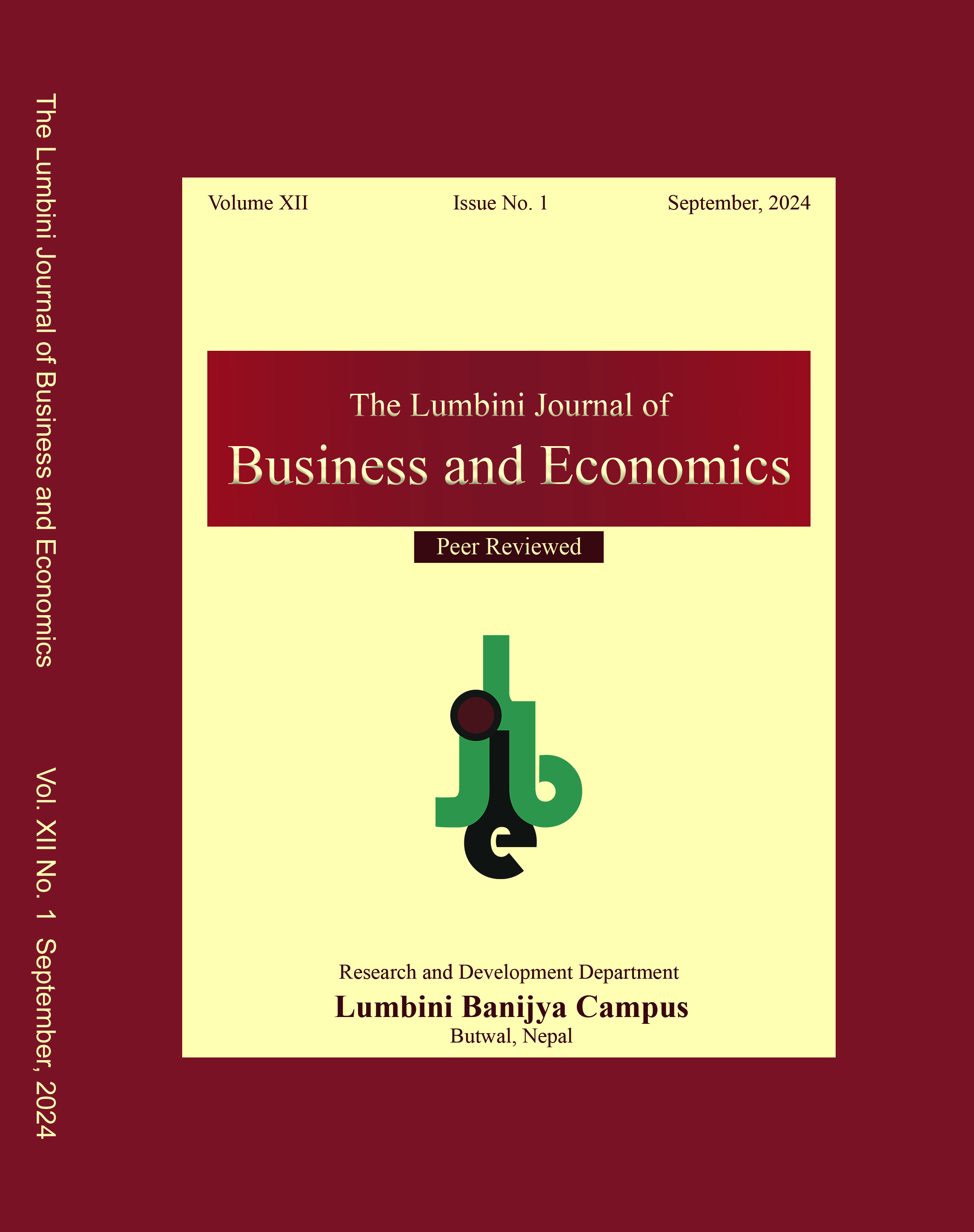Predicting NEPSE Index: An ARIMA-Based Model
DOI:
https://doi.org/10.3126/ljbe.v12i1.70318Keywords:
NEPSE, ARIMA, time series, financial forecastingAbstract
Purpose: This research aims to employ the Auto Regressive Integrated Moving Average (ARIMA) approach to forecast the Nepal Stock Exchange (NEPSE) index.
Methods: Daily univariate time series data were taken from the NEPSE website and other sources for 27 years for a total 6143 daily time series data starting in 1997. The presence of unit roots was identified through an Augmented Dickey-Fuller (ADF) test, which ensures stationarity in data. Thereafter, estimation and evaluation of AR (autoregressive), MA (moving average), and ARIMA models were carried out.
Results: The study reveals that the ARIMA (2,1,1) model is well fitted in predicting the NEPSE index, indicating its ability to capture temporal dependence and trends that exist within the data.
Conclusion: It concludes the temporal dynamics of series highlighting both the short-term impacts of past shocks and longer-term adjustment towards equilibrium. The research work supports the efficacy of model in capturing and predicting the behaviour of NEPSE index, thereby adding in informed decision making and future projections based on proposed statistical foundations.




